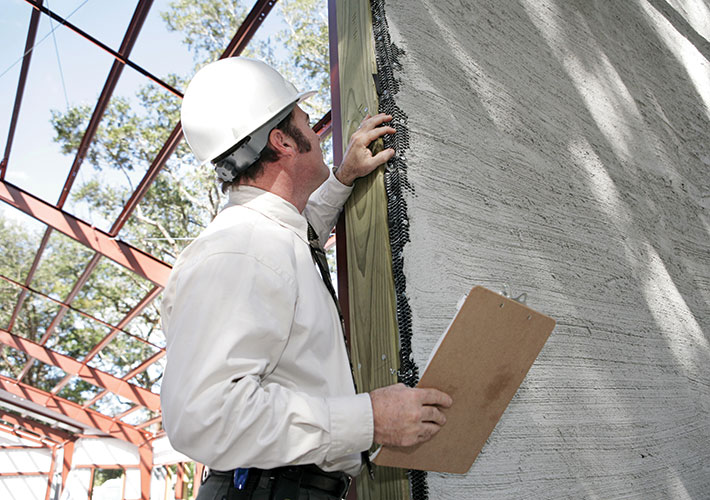
Strategies for Stucco Standards
If the subject is stucco, ASTM International’s committee on gypsum and related building materials and systems (C11) is on it.
Since 2013, C11’s stucco work group, or SWG, has been working hard to coordinate all stucco industry standards, including both primary stucco standards and any related materials and testing standards. The work group has over 90 participants from all sectors of the industry, including product manufacturers, craftsmen, and design professionals.
According to ASTM member Jeff Bowlsby, an architect and stucco consultant at Simpson Gumpertz & Heger Inc., portland cement-based plaster, popularly known as stucco, has two primary applications as an exterior wall cladding:
- Directly applied to solid substrates (cement, masonry, and stone) to create a barrier wall assembly, as described in ASTM standard C926; and
- Cement plaster applied over required lathing and a water-resistive barrier when applied over framed substrates to create a drainage wall, which is described in C926, C1063, and C1787.
“These primary stucco wall cladding ASTM standards have developed in parallel, but separately, over several decades and as a result, somewhat in isolation from each other,” says Bowlsby. “This isolation resulted in disorganization, inconsistent terminology usage, and other conflicts within the related standards, which ultimately were magnified over time throughout the industry.”
Since its formation in 2013, the stucco work group has worked toward reconciling these inconsistencies in current standards and creating new standards that reinforce consistency in the stucco industry.
Bowlsby says that the work group has successfully made numerous significant improvements to primary stucco standards C926 and C1063. This includes reorganizing the standards and clarifying terminology for consistency.
The work group has also approved two significant new standards in the past two years. C1860 provides a consensus-based methodology for testing the bond strength of portland cement-based plaster to a wall as related to lateral forces, such as wind loads for both solid wall bases and framed walls. The test methods contained in C1860 are suitable for both new and existing construction, as well as for both laboratory and field testing.
C1861 is the stucco industry’s product standard for lathing accessories and lathing fasteners, which defines individual characteristics and functions. The standard also includes several new stucco industry terms and definitions.
Each of these new standards will be useful to a wide spectrum of stakeholders, including building owners, specifiers, engineers, architects, manufacturers, and applicators throughout the industry.
Looking forward, the SWG is now developing requirements that will fill the significant needs of building owners, designers, and craftsmen in the stucco industry for the use of continuous insulation and drainage, and addressing other important stucco industry topics.
Bowlsby encourages all who are involved in the stucco industry to join in the activities of the gypsum committee and the SWG. The group is especially looking for active participation from manufacturers of water-resistive barriers, drainage media, continuous insulation systems, and extruded aluminum lathing accessories, and members of the construction inspection community.
“Although we have a good current balance of manufacturers, designers, and craftsmen, there is always room for more,” says Bowlsby. “Our standards become richer and more beneficial, and the stucco industry’s needs are better met, when we are collegial and collaborate together.”
 SN Home
SN Home Archive
Archive Advertisers
Advertisers Masthead
Masthead RateCard
RateCard Subscribe
Subscribe Email Editor
Email Editor